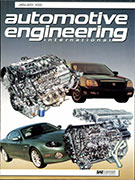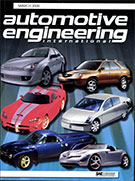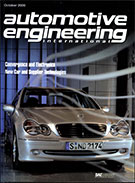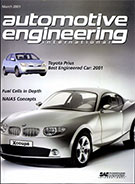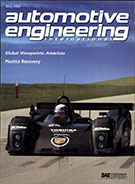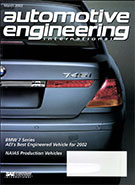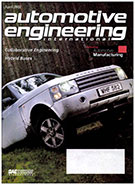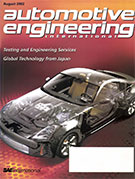Magazine

AUTOMOTIVE ENGINEERING INTERNATIONAL 2013-10-01
2013-10-01
Chrysler sees the ICE future The three-year, $30 million Multi-fuel Multiair R&D program with the U.S. DOE is nearing completion. Here's what Chrysler Powertrain engineers have learned as they try to achieve a 25% fuel-efficiency gain. Counteracting cyber-attacks As vehicle systems become more complex and interact with more internal and external elements, the potential for outside intrusion and tampering increases for both vehicles and the transportation infrastructure. Kia moves upscale with 2014 Cadenza The all-new premium sedan is the Korean automaker's 'most technologically advanced' vehicle ever on U.S. roadways. 2014 Corvette: 460 hp, 30 mpg, 1 g, $52,000 No other sports car can match the C7's combination of performance, value, and overall efficiency. Chief Engineer Tadge Juechter provides insight on executing a masterpiece.


